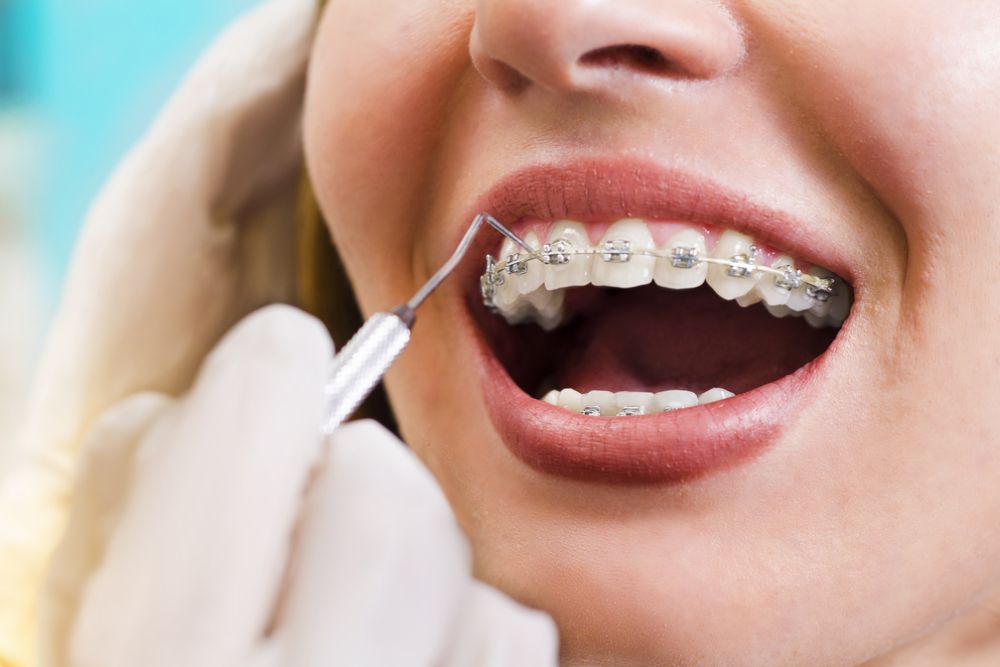Braces have long been a solution for correcting misaligned teeth, improving oral function, and enhancing smiles. But with costs ranging from a few thousand to well over $10,000, many people wonder—are braces really worth the money? Whether you’re considering braces for yourself or your child, the decision involves more than just cosmetic concerns. Straightening teeth can have significant long-term health, financial, and psychological benefits.
This guide breaks down the costs of braces, their benefits, and whether they truly provide value for the money spent.
1. Understanding the Costs of Braces
The price of braces varies based on multiple factors, including the type of braces, treatment complexity, and geographic location. Here’s a breakdown of what you can expect to pay:
| Type of Braces | Average Cost | Key Features |
|---|---|---|
| Traditional Metal Braces | $3,000 – $7,500 | Most affordable, durable, and effective for severe cases |
| Ceramic Braces | $4,000 – $8,500 | Less noticeable, but more expensive and prone to staining |
| Lingual Braces | $8,000 – $13,000 | Placed behind teeth, nearly invisible, but costliest |
| Invisalign (Clear Aligners) | $3,500 – $8,000 | Nearly invisible, removable, but not ideal for complex cases |
Additional Costs to Consider
- Retainers after braces: $100 – $500 per set (needed to maintain results).
- Regular dental visits: Required for monitoring progress.
- Orthodontic emergencies: Repairs for broken brackets or aligners can add extra costs.
Even though braces are a significant investment, they provide long-term benefits that can save money on future dental treatments.
2. The Health Benefits of Braces: Saving Money on Future Treatments
Many people assume braces are purely cosmetic, but they actually prevent costly dental issues. Investing in braces now can save thousands of dollars on future treatments.
a) Preventing Tooth Decay and Gum Disease
- Crooked or overcrowded teeth are harder to clean, increasing the risk of cavities and gum disease.
- Straight teeth allow for better brushing and flossing, reducing plaque buildup.
- Avoiding cavities means fewer fillings, root canals, and extractions—procedures that can cost hundreds to thousands over a lifetime.
b) Reducing the Risk of Jaw Problems and Pain
- Misaligned teeth often cause bite problems (overbite, underbite, crossbite), leading to jaw pain (TMJ disorders).
- Orthodontic treatment can improve chewing efficiency, reducing strain on the jaw and lowering the risk of chronic pain and expensive treatments like jaw surgery ($20,000 – $40,000).
c) Preventing Tooth Loss and Expensive Replacements
- Uneven teeth create pressure points that wear down enamel, leading to tooth fractures and possible tooth loss.
- A lost tooth often requires a dental implant ($3,000 – $6,000) or a bridge ($2,000 – $5,000).
- Braces ensure even pressure distribution, protecting teeth from damage and preventing costly dental work.
d) Correcting Speech Issues
- Misaligned teeth can contribute to speech impediments, such as lisps or difficulty pronouncing certain sounds.
- Many children and adults see improved speech clarity after orthodontic treatment, avoiding the need for speech therapy (which can cost $100 – $200 per session).
By addressing these problems early, braces eliminate the need for expensive dental procedures later in life, making them a wise investment.

3. The Psychological and Social Benefits of Braces
A confident smile can open doors both personally and professionally. While this may seem like an intangible benefit, its financial and social impact can be substantial.
a) Increased Confidence and Self-Esteem
- Studies show that people with straight teeth feel more confident in social and professional settings.
- Increased confidence can lead to better job opportunities—first impressions matter, and an attractive smile plays a significant role in networking and career advancement.
b) Higher Earning Potential
- According to a study by Kelton Research, people with well-aligned teeth are perceived as more successful and intelligent, increasing their chances of getting hired.
- Another study found that job candidates with straight teeth were 45% more likely to be hired than those with crooked teeth.
- The impact of an improved smile on career growth and salary potential can be far greater than the cost of braces.
c) Positive Impact on Mental Health
- Many individuals with misaligned teeth experience social anxiety and avoid smiling in public or photos.
- After braces, many patients report increased happiness and a better overall quality of life.
The long-term psychological benefits of braces can translate into a more fulfilling personal and professional life, making them a valuable investment.
4. Are Braces Worth the Cost? A Cost-Benefit Analysis
To determine whether braces are worth the money, let’s compare the cost of braces vs. the cost of not getting them over time:
| Factor | Braces Cost | Without Braces |
|---|---|---|
| Cavities & Fillings | Lower risk, fewer fillings | More cavities due to misalignment ($150 – $400 per filling) |
| Gum Disease Treatment | Reduced risk | Scaling & surgery ($500 – $3,000) |
| Tooth Replacement (Implants/Bridges) | Less risk of tooth loss | $3,000 – $6,000 per tooth replacement |
| Jaw Surgery/TMJ Treatment | Unlikely needed | $20,000 – $40,000 for corrective surgery |
| Speech Therapy | Often not needed | $100 – $200 per session |
| Career and Confidence Benefits | Positive impact | Possible reduced job prospects due to appearance |
While braces require an upfront investment, they often pay for themselves by preventing long-term dental expenses and increasing professional and social opportunities.
5. Ways to Afford Braces Without Breaking the Bank
The cost of braces can be intimidating, but there are several ways to make treatment more affordable:
a) Dental Insurance Coverage
- Many insurance plans cover 50% – 75% of orthodontic treatment for children and sometimes adults.
- Employer-sponsored plans often offer flexible spending accounts (FSAs) or health savings accounts (HSAs) to pay for braces with tax-free money.
b) Payment Plans and Financing Options
- Many orthodontists offer monthly payment plans with zero or low interest.
- Third-party financing (CareCredit, LendingClub) allows patients to spread costs over 12-24 months.
c) Orthodontic Discount Plans and Community Programs
- Some dental schools and nonprofit organizations provide discounted orthodontic care to qualifying patients.
- Smile Direct Club and Candid offer cheaper clear aligners, though they may not be as effective for complex cases.
By exploring these options, braces can be more affordable while still delivering lifetime benefits.
Final Verdict: Are Braces Worth the Money?
Yes, getting braces is absolutely worth the investment. While the upfront cost can be significant, the long-term savings on dental health, increased confidence, and career advantages outweigh the initial expense.
Key Takeaways:
✅ Braces prevent costly dental problems, such as cavities, gum disease, and tooth loss.
✅ They reduce jaw pain, speech issues, and bite problems, preventing future medical expenses.
✅ A straight smile boosts confidence, enhances job prospects, and improves mental health.
✅ With insurance, payment plans, and financing options, braces are more accessible than ever.
In the end, braces are not just about appearance—they are an investment in your overall health, confidence, and financial future.



